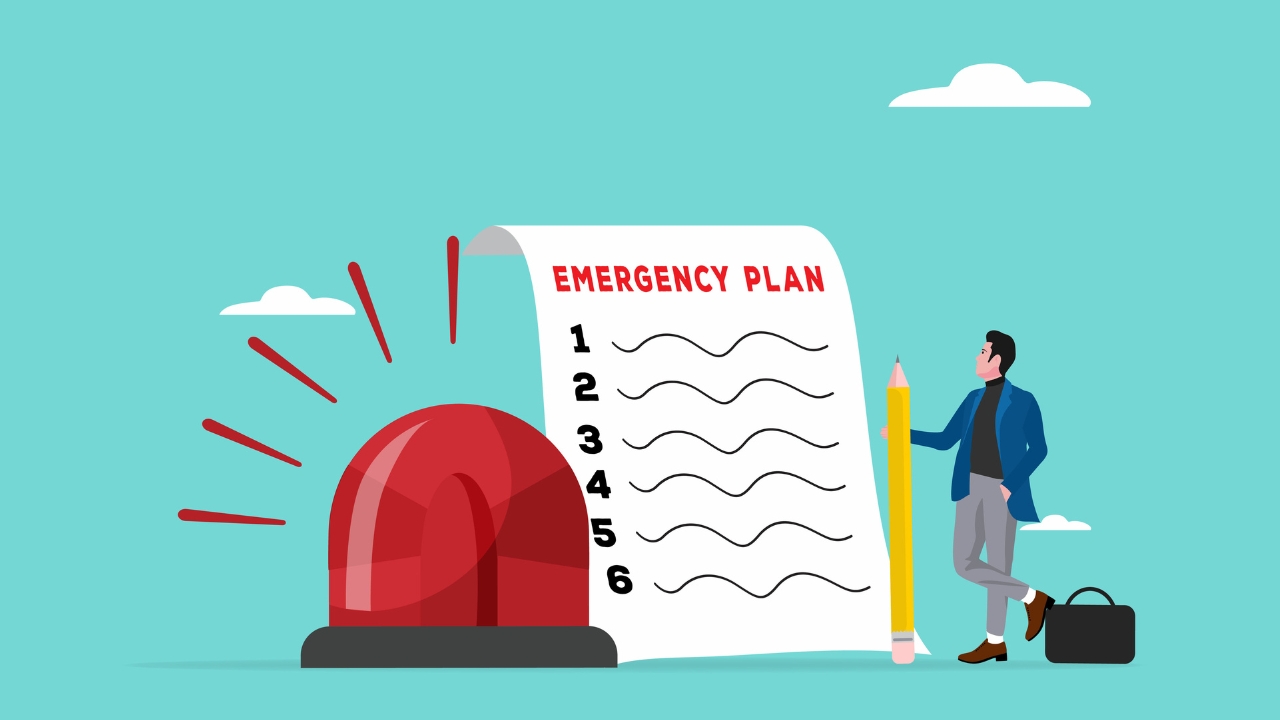
Natural Disasters. The departure of an important employee. Cyber attacks and data breaches. Disruptions to businesses can happen at any moment and have devastating consequences.
Data from FEMA shows that a quarter of businesses will never reopen over a disastrous incident that impacts their business. And the longer recovery from disruption takes, the more likely a business will have to permanently shut its doors.
That’s why any organization needs to consider business continuity as part of its business strategy so you can prepare for disruptions before they happen and respond to them appropriately when they do.
This article tells you everything you need to know about business continuity, including what it is, why it’s important, as well as how to create a continuity plan and manage it.
What is business continuity?
Business continuity is an organization's ability to keep functioning when faced with disruptions. These disruptions can be anything from a power outage to a cyber attack or even a natural disaster. It can also involve preparing for situations like unexpected staff departures or supply chain failures, along with anything else that can bring a business to a halt.
Business continuity isn't just about reacting to crises. It involves planning and preparing beforehand to minimize the impact of disruptions to ensure that essential business operations can continue with minimal interruption.

This means having a system in place so that the organization can quickly recover and get back to normal operations. This plan should address things like communication, data recovery, and how to keep essential operations running.
Business continuity is different from disaster recovery, which specifically focuses on getting IT systems back up and running after a disaster. Unlike disaster recovery, business continuity has a broader scope and looks at how to keep the entire business operational during any kind of disruption.
Why is business continuity important?
Business continuity is important because it can prevent disruptions from damaging your organization. Disruptions often lead to downtime, leading to lost revenue and productivity, and a business continuity plan is crucial for getting things back up and running before they impact the bottom line.
The consequences of not being able to recover from a disruptive event can be massive. If a company can't respond effectively to a crisis, it can damage its reputation.
A business continuity plan shows customers and partners that the company is prepared and can be trusted and is proven to help maintain customer satisfaction and loyalty.
Some industries also have legal requirements for business continuity planning. Having a plan ensures compliance and helps avoid potential fines.
What is a business continuity plan (BCP)?
A business continuity plan (BCP) is a detailed roadmap that outlines how a company will respond to and recover from disruptions to its operations. It's acts as a playbook for various disaster scenarios or abnormal conditions, allowing the organization to keep operating with minimal interruption.

By having a well-defined business continuity pla in place, businesses can significantly improve their resilience in the face of disruptions. This translates to reduced downtime, better customer service, and ultimately, a stronger overall business.
How to set up a business continuity plan (BCP)
1. Identify threats
The first step in any business continuity plan involves pinpointing potential threats that could disrupt your business. This could be anything from natural disasters and power outages to cyberattacks or supply chain issues.
2. Analyze the impact
Once you've identified the threats, you need to assess how they could impact your operations. This involves determining which critical functions are most vulnerable and for how long they can be down before causing serious problems.
3. Develop recovery strategies:
The core of the BCP is outlining specific procedures for recovering from disruptions. This includes things like:
- Communication protocols: How will employees, customers, and partners be informed of the situation and what steps are being taken?
- Data backup and recovery: How will critical data be protected and restored in case of a system outage?
- Alternate work arrangements: How will employees continue working if the physical workplace is inaccessible?
- Business continuity checklists: These are step-by-step guides for different scenarios to ensure a coordinated response.
4. Test and maintain
A good business continuity plan isn't a static document. It needs to be regularly reviewed, tested through simulations, and updated to reflect changes in the business or its threats. This process is known as business continuity management.
What is business continuity management?
Business continuity management (BCM) is the ongoing process of ensuring an organization can keep functioning through disruptions.
BCM goes beyond just having a plan. It's a framework that ensures your entire organization is prepared for disruptions. This includes things like training employees, testing procedures, and keeping your plan up-to-date.
The goal is to prevent disruptions whenever possible. This means implementing measures like data backups, redundancy in critical systems, and having alternate suppliers to minimize downtime.

BCM is an ongoing process. It involves regularly reviewing your plan, testing your response procedures, and making adjustments as needed.
You can think of business continuity as a continuous circle involving four stages: preparation, response, recovery and review.
Stages of business continuity management
1. Preparation
Preparation is the foundation stage in business continuity management (BCM). It's where all the planning and groundwork happens to ensure your organization can respond effectively to disruptions
The first step is understanding what could potentially disrupt your business. This involves conducting a thorough risk assessment to identify threats like natural disasters, cyberattacks, power outages, or even key employee departures. You'll also want to pinpoint vulnerabilities within your organization that could make these threats more impactful.
Once you know the threats, you need a roadmap for how to handle them. The BCP outlines the steps to take in case of a disruption.
2. Response
Incident response in business continuity management (BCM) is the second stage of the BCM circle. It focuses on taking immediate actions to contain, minimize damage, and effectively manage a disruption when it actually occurs.
When a disruption hits, the pre-defined response plan outlined in the BCP swings into action. This plan serves as a guide for the incident response team to follow. The top priority is to stop the disruption from escalating and ensure the safety of employees. This can involve actions like isolating a cyberattack, evacuating a building in a fire, or shutting down faulty equipment.
Throughout the incident response, it's crucial to document everything. This includes the nature of the incident, actions taken, communication records, and any challenges encountered. This documentation will be invaluable during the recovery and review stages.
3. Recovery
After a disruption has been contained and the initial response measures have been taken, the focus shifts towards getting the business back up and running as quickly and efficiently as possible.
A core function of this recovery is restoring critical systems and data that were impacted by the disruption. This involves things like recovering data from backups, bringing IT systems back online, and restoring physical infrastructure or equipment (if applicable).
If the original workplace is inaccessible due to the disruption, recovery might mean implementing alternate work arrangements. This could include allowing employees to work remotely or setting up temporary workstations at a secondary location.
4. Testing and maintenance
Testing and maintenance in business continuity management go hand-in-hand with recovering from disruptions. They're vital steps within the BCM circle that follow the preparation stage and come before the incident response and recovery stages.
Testing validates the effectiveness of your Business Continuity Plan (BCP) and identifies areas for improvement. This involves reviewing the BCP as a team, discussing roles and responsibilities, and identifying any gaps or areas of confusion.
Maintenance keeps your BCP up-to-date and ensures it reflects the current state of your business. You’ll need to schedule periodic reviews of the BCP to ensure it remains relevant and reflects any changes in your business environment, technology, or threats.
Based on testing results, reviews, and real-world incidents, you can then update the BCP to address any identified gaps or shortcomings.
Final Thoughts
Business continuity is an investment in the resilience of your organization. It's about being proactive and prepared for the unexpected because disruptions are inevitable.
If your business has yet to implement a carefully constructed and tested disaster recovery plan, you may be one emergency away from devastating operational disruptions and financial losses.
Rather than becoming another example of a business that fell apart due to bad business continuity, you can increase the likelihood that you’ll survive an unexpected event by employing sound disaster recovery strategies.
By taking business continuity seriously, you can significantly improve your organization's ability to weather storms and emerge stronger.
Remember, a little preparation today can save a lot of trouble tomorrow. Be proactive and take steps to safeguard your business continuity today.












